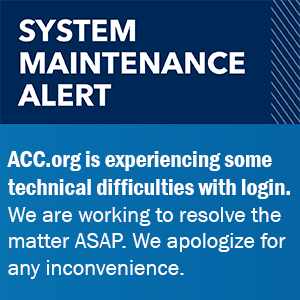Temperature and Neurologic Outcomes in Neonatal Cardiac Surgery
Quick Takes
- Overall, nadir intraoperative temperature (NIT) was not associated with risk of early neurologic injury (seizure, stroke, or neurologic deficit) after neonatal congenital heart surgery.
- Lower NIT appeared protective for infants undergoing the Norwood procedure.
- The overall rate of neurologic injury for all patients was 4.9%. For the Norwood procedure, the rate was 8.7%, while the rate for arterial switch operations and aortic arch surgeries was 3.2%.
Study Questions:
What is the association between nadir intraoperative temperature (NIT) and early neurologic outcomes in neonates undergoing congenital heart surgery?
Methods:
A retrospective review was performed using the Society for Thoracic Surgeons Congenital Heart Surgery Database (STS CHSD) between 2010 and 2010. NIT was assessed using a mixed-effect logistic regression model. The primary outcome was major neurologic injury as defined by stroke, seizure, or neurologic deficit at discharge (all outcomes assessed during the neonatal hospitalization).
Results:
A total of 24,345 neonatal cardiac operations from the STS CHSD were analyzed. Together, Norwood procedures (24%), atrial switch operations (23%), and aortic arch procedures (18%) accounted for most of the procedures. Over the course of the study period, there was a shift from hypothermic circulatory arrest (HCA) to cerebral perfusion (CP) with an increase in mean nadir temperature from 23.9°C to 25.6°C (p < 0.0001). Major neurologic injury was noted in 4.9% of the cohort and varied based on the surgical procedure. After adjusting for risk, NIT was not significantly associated with major neurological injuries overall, but a lower NIT was protective in the Norwood subgroup. Factors increasing the risk of major neurological injury included younger age at surgery, the Norwood procedure, longer bypass times, younger gestational age, presence of noncardiac abnormalities, and chromosomal abnormalities.
Conclusions:
Neurologic injuries are prevalent after neonatal cardiac surgery. Current practice leans toward the use of cerebral perfusion strategies with higher core temperatures. Lower NIT was protective in the Norwood subgroup, suggesting the need for a nuanced and individualized approach based on specific risk factors.
Perspective:
Given the prevalence of neurologic injury after neonatal cardiac surgery, identifying modifiable risk factors is critical. This study analyzed a large cohort from the STS CHSD database. Overall, there has been a trend in practice patterns towards increased use of cerebral perfusion with associated higher intraoperative temperatures. Overall, there was not an association between intraoperative temperature and early neurologic injury, although there appeared to be a benefit to lower NIT in patients undergoing the Norwood procedure.
The study demonstrated the complexities of intraoperative management in neonates and supports an individualized approach to surgical planning. Interestingly, the large cohort gives us valuable information as to the frequency of neurologic injury for specific surgeries. The rate of early neurologic injury was 8.9% after the Norwood procedure, and 3.2% after both the arterial switch and aortic arch procedures. These data can help in counseling families regarding risk as well as in identifying patient groups at higher risk.
Clinical Topics: Congenital Heart Disease and Pediatric Cardiology, Congenital Heart Disease, Cardiac Surgery and CHD and Pediatrics
Keywords: Heart Defects, Congenital, Neurologic Manifestations
< Back to Listings

